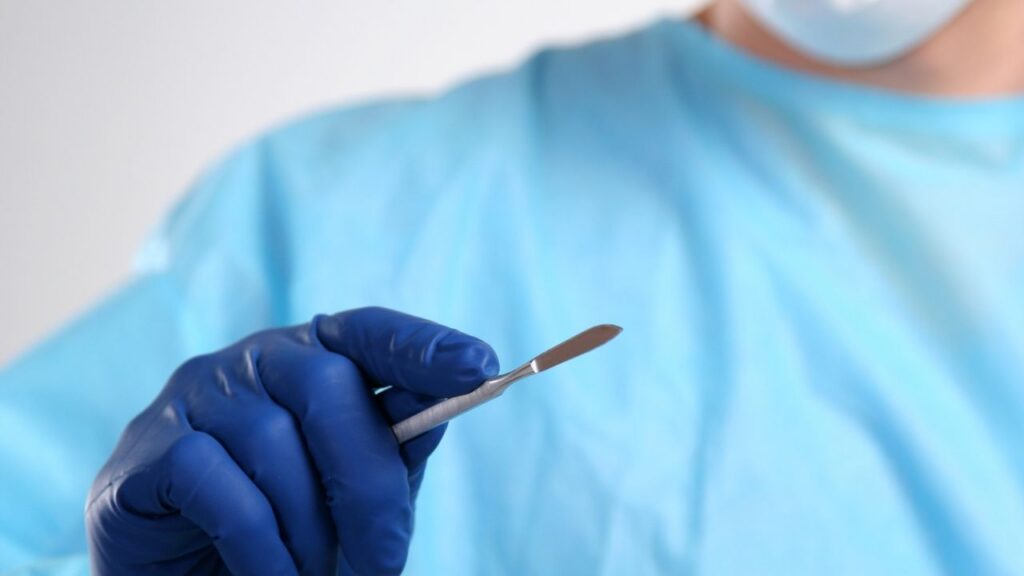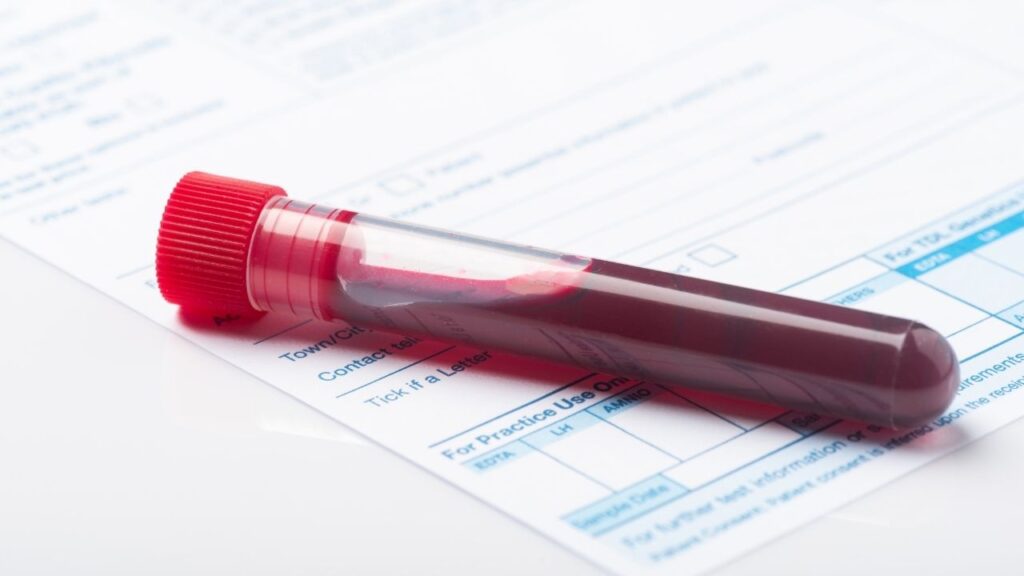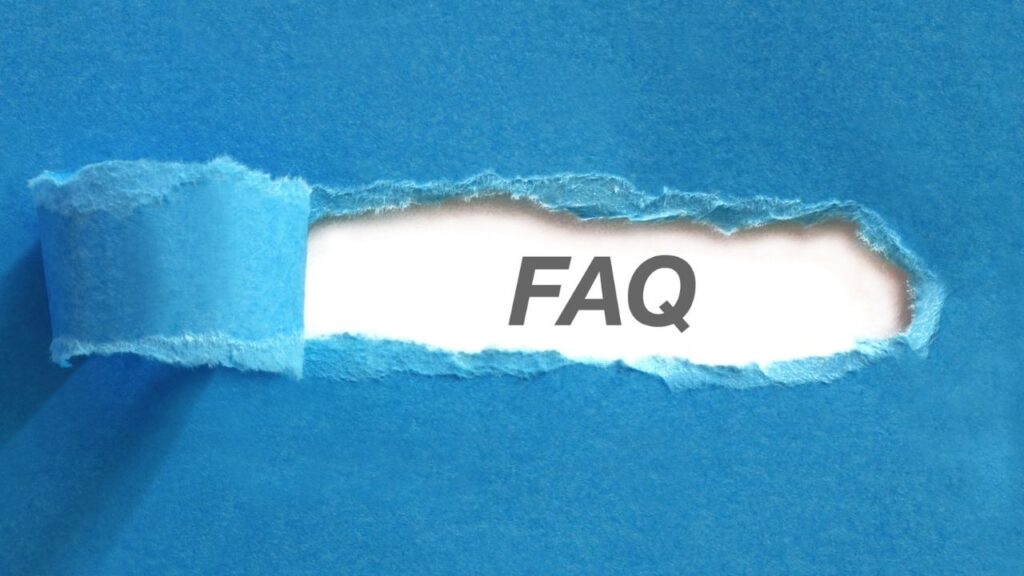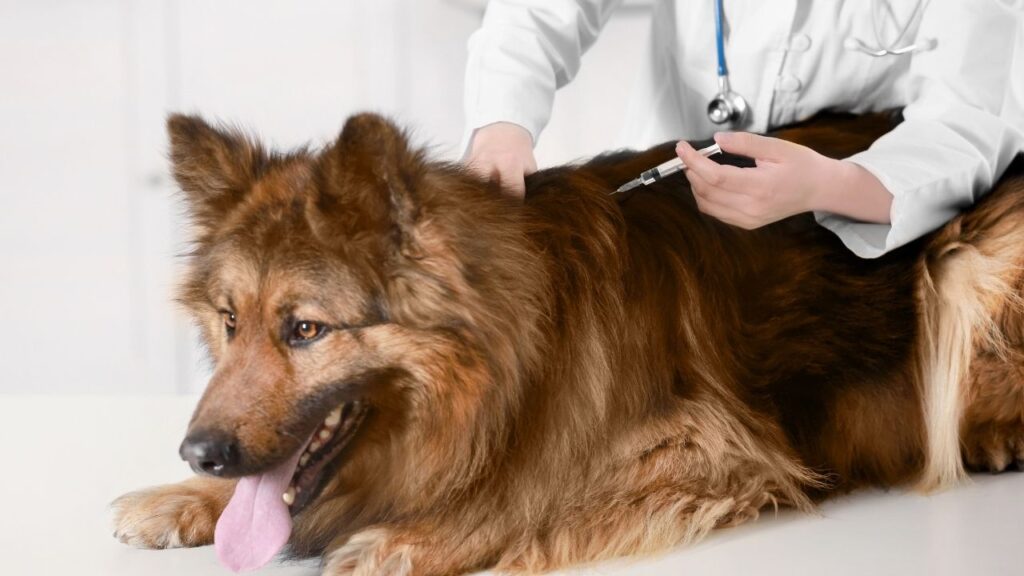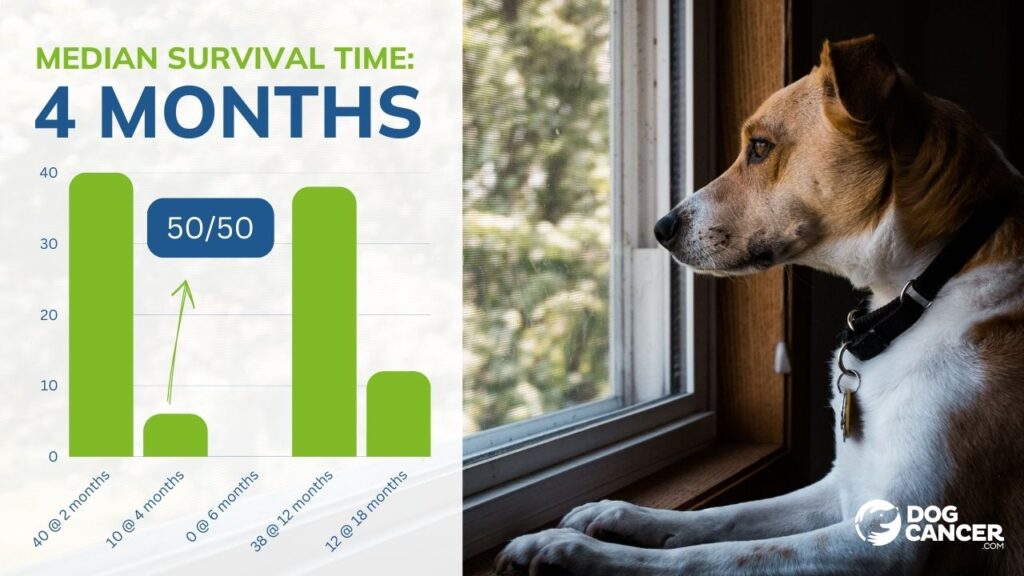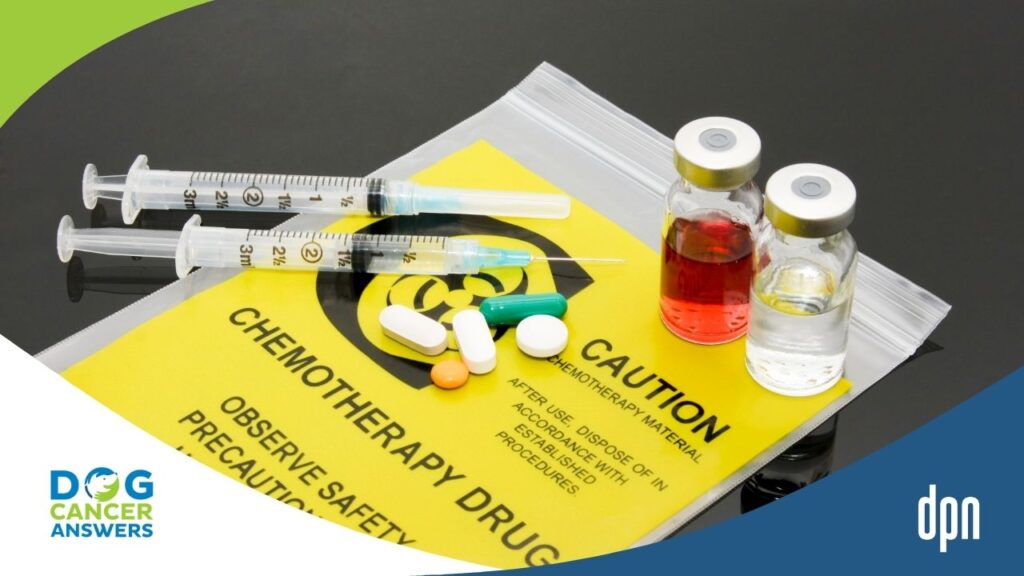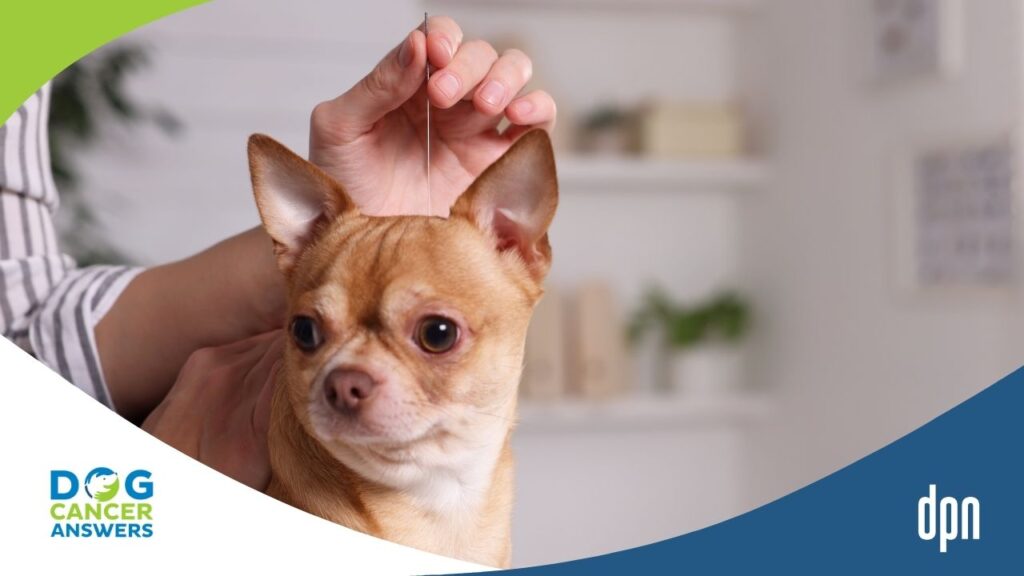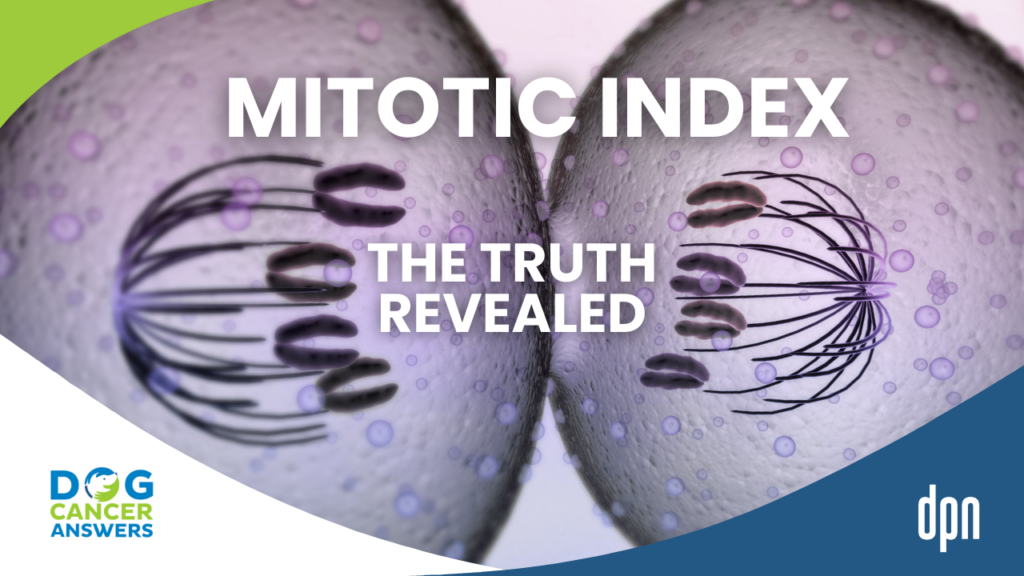EPISODE 254 | RELEASED September 2, 2024
Found a Lump on My Dog and Other Bad Signs | David Vail, DVM, MS, Dip. ACVIM (Oncology)
Is that lump on your dog cancer? Don’t wait to find out. Early detection literally saves lives.
SHOW NOTES
When cancer makes your dog’s body its home, changes occur. Sometimes those changes are deep in the body, undetectable. But others show up as lethargy, weight loss, digestive upset, and, sometimes, physical lumps and bumps you can feel.
Dr. David Vail, a veterinary oncologist at the University of Wisconsin, joins us to discuss the early warning signs of dog cancer. Every time we catch cancer early, we improve the potential for a positive outcome!
Key Takeaways:
- Importance of Early Detection: Catching cancer early equals more effective treatment and better outcomes.
- Monitoring Lumps and Bumps: Regularly check, measure, and document any lumps or bumps on your dog.
- Track and Record Symptoms: Keep detailed records of any changes in your dog’s health, including photos and measurements of abnormalities.
- Investigate Non-Specific Symptoms: Signs like weight loss, lethargy, or abnormal odors could indicate a serious issue and should be evaluated by a vet.
- Routine Check-Ups Matter: Ensure your dog, especially as they age, has regular veterinary exams to catch any potential health concerns early.
- Caution with New Screening Tests: While promising, newer tests like liquid biopsies are still being developed and should be considered carefully.
- Emergency Care Guidance: Know when symptoms like difficulty breathing or persistent vomiting warrant immediate veterinary attention.
Related Resources:
Find a board-certified veterinary oncologist on the Vet Specialists website: https://www.vetspecialists.com/find-a-specialist
Join our Facebook support group at https://www.dogcancer.com/support
Your Voice Matters!
If you have a question for our team, or if you want to share your own hopeful dog cancer story, we want to hear from you! Go to https://www.dogcancer.com/ask to submit your question or story, or call our Listener Line at +1 808-868-3200 to leave a question.
[00:00:00] >> Dr. David Vail: The earlier something is investigated, the better. The earlier we find disease, the much more likely it is that it’ll be something that we can apply a curative intent therapy to.
[00:00:12] >> Announcer: Welcome to Dog Cancer Answers, where we help you help your dog with cancer.
[00:00:19] >> Molly Jacobson: Hello listener, I’m Molly Jacobson, Editor in Chief at DogCancer.com, where over 40 veterinarians, veterinarians, veterinary oncologists, veterinary technicians, cancer researchers, and science writers like me pull together to bring you better information today so you have no regrets tomorrow.
Today we’re talking to Dr. David Vail, a veterinary oncologist at the University of Wisconsin who researches dog cancer, teaches baby veterinarians, and treats dogs with cancer. Dr. Vail has big insights into how to help catch cancer early by heeding those warning signs your dog’s body is giving off even when they’re subtle. And now let’s go to my conversation with one of America’s preeminent veterinary oncologists, Dr. David Vail.
Dr. Vail, thank you for joining us today.
[00:01:10] >> Dr. David Vail: Thanks for having me here. It’s my pleasure.
[00:01:12] >> Molly Jacobson: It’s such a pleasure to have you join us. So I’ve heard that the five most dangerous words in the English language are maybe it will go away, or, let’s see if it grows. And I believe you said that.
[00:01:26] >> Dr. David Vail: Yeah, probably somebody said it long before me. One of my mentors, um, probably said it first, so it’s out there in the vernacular, but it is very true. You know, most of, and you know, the classic, we were talking about the signs of cancer, the classic sign, of course, that comes to mind when we think of that is I found a lump or a bump. And in those scenarios, the good news is that the vast majority of lumps or bumps that a caregiver will find are benign disease and can be dealt with good outcomes.
So that should be the first thought is that, you know, this is something that I can deal with. But it really behooves us to make sure that that’s the case and to find out what it is and deal with it. For example, the, the classic screening test for a lump or a bump that is found is something called the fine needle aspirate. We put a tiny needle in, withdraw some cells, and have a look at it.
And the vast majority of things, for example, in an older dog, the classic would be a lipoma, benign fatty mass. So in that scenario, I’m not going to ignore it. I’m going to have it right in the face page of my medical records, something called the master problem list. And it’ll say on June 18th, I found a lump that was three centimeters in longest diameter and aspirate show that it was a lipoma. So I’m not ignoring it. I am documenting it.
And the next time I see that patient, if it’s changed, then I’ll go, maybe I should put another needle in this, or maybe I should be concerned. So yeah, it’s really important to not just maybe it’ll go away or let’s see if it grows is to ignore it. If it’s appropriate to ignore it and don’t ignore it, if it’s not.
The other piece of information that’s so important to know is that even if it is bad disease, the earlier that we catch it, the more likely there will be a curative modality or treatment that can be applied before, for example, with cancer, before it’s spread to the local lymph node or beyond, or before it’s gotten so large that a simple surgery or simple radiation therapy will be able to deal with it.
[00:03:34] >> Molly Jacobson: So if my dog gets a lump, how soon should I go to the vet to make sure that they’re able to look at it?
[00:03:42] >> Dr. David Vail: Generally, from an oncologist standpoint, and of course, in my practice, you know, I see, you know, the good, the bad, and the ugly. So I will always say that, you know, the earlier something new is investigated, the better, because the earlier we find disease, the much more likely it is that it’ll be something that we can apply a curative intent therapy to. So yeah, within reason, the earlier, the better.
[00:04:07] >> Molly Jacobson: Okay. Are there any other early warning signs that cancer is in process?
[00:04:13] >> Dr. David Vail: Certainly, you know, there’s all kinds of lists out there. There’s the eight most common, the 10 most common, the 12, whatever. Those other clinical signs or symptoms tend to be much less specific. That is that there are, by no means, classic for cancer. They’re general symptoms that could be due to cancer, but there are many other diseases. So they’re ones to say, I have this clinical symptom, therefore it should be investigated.
That’s all. It’s not, I have this. this symptom, so it is cancer. But the others that we always talk about are, you know, abnormal odors, something new, either from the, the ears or any other body cavity or the mouth in particular. All of a sudden, bad breath in an older dog should be of concern. A non healing wound or sores that come up, those certainly should be investigated.
Loss of appetite or loss of weight, those are very nonspecific signs. There are literally dozens of diseases that will cause weight loss and by no means is that a classic for cancer, but it’s a sign that should be investigated. Coughing or difficulty breathing. Of course, the difficulty breathing, you know, depending on the severity could be an emergency and obviously needs to be looked at. But those could potentially be an early sign of cancer.
Increased drinking or increased urination, change in bowel movements, certainly any blood in the bowel movement could be an early warning sign. Again, not specific for cancer. Evidence of pain, a lameness that comes up all of a sudden, especially in an older dog that doesn’t have a history of some traumatic event, even something as simple or as nonspecific as lower energy levels, that could be an early sign of cancer, but again, is by no means classic for cancer.
So kind of the bottom line is most of our caregivers are in tune with their companions and they know when something is different or odd or not part of their normal daily routine. And if it’s consistent and troubling, then it should be investigated, not just from a cancer standpoint, but from a general quality of life and medicine standpoint.
[00:06:33] >> Molly Jacobson: Yeah, that makes sense. So we know if something’s not right, we should get it checked out and trust our gut. It sounds like you’re saying.
[00:06:41] >> Dr. David Vail: Exactly.
[00:06:43] >> Molly Jacobson: Do veterinarians trust our gut? Does that matter to you?
[00:06:46] >> Dr. David Vail: Yeah. You know, there’s certain intuition that really comes with experience, as well. A veterinarian that’s very early in their career should trust their gut less than a veterinarian like myself who’s been practicing for 32 years. But there is a flip side to that, that, you know, you can get, uh, somewhat cavalier and overconfident in your intuition and you should always back it up with science as well.
[00:07:12] >> Molly Jacobson: Right. Get it checked out.
[00:07:13] >> Dr. David Vail: Yeah.
[00:07:15] >> Molly Jacobson: And so what I heard you just say, and I just want to make sure I got it, because you’re saying lumps sometimes are cancer, sometimes are not.
[00:07:24] >> Dr. David Vail: Right
[00:07:24] >> Molly Jacobson: But so are lots of other things that could come up. But just because your dog is extra tired or is not eating lately does not mean they have cancer. You don’t have to jump to that. It could be other things.
[00:07:37] >> Dr. David Vail: Yes, you certainly don’t have to jump to that. That would be on, you know, what we call our list of differential diagnoses. So based on the symptom that’s there, we would come up with, you know, a list of potential diseases that could be causing that symptom.
And it depends on how specific that symptom is. If it’s something like lower energy levels, there’s literally a hundred things on that list. If there’s something like bleeding from the nose, there might be five things on that list that we would want to rule in or rule out. So it really depends on how non specific that clinical symptom is.
[00:08:15] >> Molly Jacobson: Let’s take a quick break here to listen to our generous sponsors, and we’ll be back with more from Dr. David Vail.
And we’re back with veterinary oncologist, Dr. David Vail. So, a lot of times people wonder, should I go to the emergency? Like, they’re very upset. Right? Because they know their dog isn’t well, and they get very upset about it. And they think, should I just go to the emergency or should I wait until tomorrow or the day after or a week later when my regular vet can see my dog?
[00:08:48] >> Dr. David Vail: Right. Yeah. And that, that again, plays into the caregiver and their understanding of their particular companion. So if it’s something obvious, like breathing difficulty, that’s obvious. You should seek, uh, medical attention immediately. So an emergency facility or an urgent care facility would be appropriate for something like that.
One vomiting event in an otherwise healthy and happy dog is not something that I would generally say, go to a, an emergency room. I would, you know, in a situation like that, say withhold food for a few hours. Watch your pet closer than you normally would. Make sure that they’re bright and alert. and responsive at that point.
If they start to have more vomiting over a period of a shorter period of time and become lethargic or, or lower energy level, maybe they’re becoming dehydrated, then that would become more and more urgent. So it would depend on the type of symptom and how urgent it appears and how affected, in general, your companion is. You know, for example, with the cats that I’ve owned in my life, if I went to the emergency room every time one of my cats vomited, I would spend my entire life in the emergency room. So, yeah.
[00:10:05] >> Molly Jacobson: Very true. I think that’s the balancing act, right?
[00:10:08] >> Dr. David Vail: Right.
[00:10:08] >> Molly Jacobson: Yes.
[00:10:09] >> Dr. David Vail: Now, if you’re unsure, it’s always better to err on the side of, I better call somebody and bounce it off somebody that has more experience. So, most emergency hospitals, and if your general practitioner is closed, will triage over the phone to the best of their abilities. Bearing in mind that the information that you give is all the information that they’ll have. They’re not seeing your, your companion. So you want to be thorough with your discussion and your concerns.
And if you’re not happy with the response, state that in a nice way and say, look, I hear you, but I know my companion and, and he or she is really acting depressed. And I would really feel more comfortable being seen, then it’s, you absolutely have the right to override that and say, look, I’m coming in. I just don’t feel comfortable.
At the end of the day, as I’ve said, uh, before, and I always teach that, uh, the caregiver is the best judge of their animal’s quality of life and, uh, uh, listen to them because they see that, that companion in the natural environment. Whereas we, as veterinarians, we see them in an unusual environment in hospital.
They’re stressed. They’re like kids. You go to the pediatrician. My kids always got better as soon as they walked into the door because of stress or whatever. They’re always, their symptoms go away and you’re standing there going, well, really, he was doing this before.
[00:11:38] >> Molly Jacobson: The adrenaline kicks in, right?
[00:11:39] >> Dr. David Vail: Absolutely.
[00:11:40] >> Molly Jacobson: And the adrenaline is a miracle.
[00:11:41] >> Dr. David Vail: It can be.
[00:11:43] >> Molly Jacobson: Yeah.
[00:11:43] >> Dr. David Vail: Yeah.
[00:11:44] >> Molly Jacobson: So I wanted to ask you, you know, we have new early detection strategies entering the market. Some are covered by pet health insurance, others aren’t. Some are covered in some circumstances. What do you think of some of these new early detection tools like the liquid biopsy test?
[00:12:03] >> Dr. David Vail: There is a lot of that currently coming into the market, and there is no perfect pre-screening test at this point. Even on the human side, physician based medicine, the scrutiny to get an early recognition test on the human side is much stricter, requires FDA approval and very, very good documentation.
This is all relatively new to the regulatory organizations of the government on the veterinary side. And the bar that the science bar is, is quite a bit lower. And it’s a little bit like the wild, wild West right now. So there are a lot of tests coming on to the market. They have some pros and they have some definite cons, and I definitely would not make a, a life changing decision based on those early tests.
Many of them are just being developed, and we’re just collecting a longer term data on those tests as to what does it mean. I always say if I have a test, I want to have an actionable result that is that if I get a, a positive test, is there something I can do based on that positive test? And if there isn’t, then I don’t want to know about it.
I don’t want that test. That kind of the classic example on the human side is prostate specific antigen. And every male over the age of 50 is asked by their physician, whether they want a PSA test and most generalists, general practitioners will tell that male human that this is a very controversial test now because a lot of people will develop a high PSA and never have a problem with their prostate.
And in lesser times, five, even 10 years ago, people were undergoing very aggressive therapy when they didn’t need to. And so that’s a screening test and it’s a very inadequate screening test. So a lot of people, and personally, I chose not to get the PSA test because it really doesn’t have an actionable result in many cases.
Now, the caveat to that is if you do have prostate cancer or you have some other cancer that there is a screening test, whether you’re a dog or a cat or a person, and the screening test, really the place for a lot of those screening tests is, if before treatment that test is very positive and after treatment it’s very lower or non existent, then that test becomes much more helpful to determine whether the disease is recurring or responding to treatment or not.
That’s kind of where we are right now in the veterinary world. Rather than having any good screening test for who has cancer and who doesn’t, that test is currently not available, that’s specific or sensitive enough in veterinary medicine to start applying now.
[00:15:04] >> Molly Jacobson: Okay. So if somebody is interested in trying one of these new tests, they’re contributing to knowledge in general.
[00:15:12] >> Dr. David Vail: Exactly. The way I present it to my clients now is, yes, we can run that test and that’ll get into the database for the future. But I wouldn’t make any life altering decisions based on that test. It might tell me to do more testing.
[00:15:26] >> Molly Jacobson: Right. So we don’t have anything right now. We don’t have a blood test, for example, that would say, Oh, you have cancer. We have a blood test that would say, Hey, there’s something going on that’s unusual and maybe you should investigate it further.
[00:15:40] >> Dr. David Vail: That’s correct. That’s the best of the, of what we have currently now.
[00:15:44] >> Molly Jacobson: Great. Are there any exciting new things coming up?
[00:15:49] >> Dr. David Vail: Yeah. No, I mean, there are various types of, you know, the, the idea of having a liquid biopsy. The key to liquid biopsies right now, or the holy grail, is to have a, a simple blood test that will tell you very early that you have cancer in a very early stage that can be dealt with.
[00:16:09] >> Molly Jacobson: Right. That would be the ideal, right? That’s what we’re hoping for.
[00:16:12] >> Dr. David Vail: And that the types of liquid biopsies that are currently available, the sensitivity for them right now is still suspect. And until we know a lot more, for example, some of the tests that are currently available will give you a something as short as a five week lead time before you would have diagnosed it anyways.
Now is five weeks an actionable period of time to know? Maybe, but not likely. So we’re talking about tests that could diagnose cancer before when it’s still a single cell or a few thousand or a few million cells before it grows into an actual tumor. There are some tests like that that are in early development, both in the human oncology world and the veterinary oncology world. We’re just not quite there yet.
[00:17:05] >> Molly Jacobson: Okay, are there any other early detection strategies that we haven’t talked about already that you think might be helpful for people to keep in mind?
[00:17:16] >> Dr. David Vail: Yeah, I think, uh, just getting back to our basic discussion of what are potential warning signs of cancer and acting on them early and really nothing is as good as having routine veterinary care.
So at least, especially in companion animals, dogs and cats, dogs that get above the age of six should have a, at least an annual, and as they get older and are slowing down, uh, perhaps twice a year physical exam by a veterinarian, because that’s where a lot of the early signs can be picked up, just some basic blood tests, looking for basic organ function, you know, having a trained set of hands, do a good physical exam and palpation and rectal exam and listen to the chest and listen to the heart and find these signs early rather than later is so good preventative care and annual checkups. Very important.
[00:18:14] >> Molly Jacobson: That seems like really solid advice. Are there any imaging tests that you think people should be doing routinely as dogs get older in those wellness exams?
[00:18:24] >> Dr. David Vail: Yeah. So there are certainly routine imaging or diagnostics that are used on the human side. I mean, the classic example would be colonoscopy for colon cancer, right? Thankfully, the incidence of colon cancer is extremely low in dogs, so that’s not something that we would routinely recommend. In people, mammographies for breast cancer very early, for women at risk earlier than women that don’t have risk factors, certainly the, it’s kind of a moving target, but anywhere from 40 to 50 years of age.
Because our dog population, at least in North America, is primarily a neutered or a spayed population, the risk of breast cancer is extremely low, mammary cancer in dogs, so we don’t really recommend routine imaging in that case. I have patients or I have caregivers that come to me and say, look, I want an annual cat scan for my dog every year.
And you know what, I’ll look them in the eye and say, look, the, the cost benefit of doing that just isn’t established in the dog. Yeah, we can do it. No diagnostic test or virtually no diagnostic test is without risk. CT scans do increase very small, but, um, over time could build up, uh, radiation exposure, for example.
As the newer machines come along, the radiation exposure gets less and less over time. And again, the ability to say, is this test have cost benefit? That is that, are you going to pick up something that you could deal with early, hasn’t been established for something like whole body CT, even on the human side.
For some things like lung cancer, there are now newer regulations and people coming out, or not regulations, guidelines, that it might be appropriate, especially in people at risk, for example, smokers, to have a chest radiograph or a chest CT performed after the age of, you know, et cetera, et cetera. But really nothing like that is established in, in veterinary medicine at this point. Thankfully, our dogs are not smokers, cats are not smokers, although they are exposed to secondhand smoke, et cetera, so.
[00:20:32] >> Molly Jacobson: Right. Well, thank you so much for joining us today. It’s been very helpful.
[00:20:38] >> Dr. David Vail: Yeah, absolutely. Anytime.
[00:20:41] >> Molly Jacobson: And thank you, listener. We hope Dr. Vail’s experience and insights will help you with your own dog and also with any dogs who are lucky enough to call you mom or dad in the future.
Check the show notes for links to articles and other resources you don’t want to miss. And don’t forget to subscribe to our show, wherever you get your podcasts, so you never miss an episode. I’ll see you on DogCancer.com, where you’ll find better information today., So you have no regrets tomorrow.
For all of us here at Dog Podcast Network, I’m Molly Jacobson wishing you and your dog a warm Aloha.
[00:21:21] >> Announcer: Thank you for listening to Dog Cancer Answers. If you’d like to connect, please visit our website at DogCancer.com, or call our listener line at (808) 868-3200. And here’s a friendly reminder that you probably already know, this podcast is provided for informational and educational purposes only.
It’s not meant to take the place of the advice you receive from your dog’s veterinarian. Only veterinarians who examine your dog can give you veterinary advice or diagnose your dog’s medical condition. Your reliance on the information you hear on this podcast is solely at your own risk.
If your dog has a specific health problem, contact your veterinarian. Also, please keep in mind that veterinary information can change rapidly, therefore, some information may be out of date.
Dog Cancer Answers is a presentation of Maui Media in association with Dog Podcast Network.
Hosted By
SUBSCRIBE ON YOUR FAVORITE PLATFORM
Topics
Editor's Picks
CATEGORY


